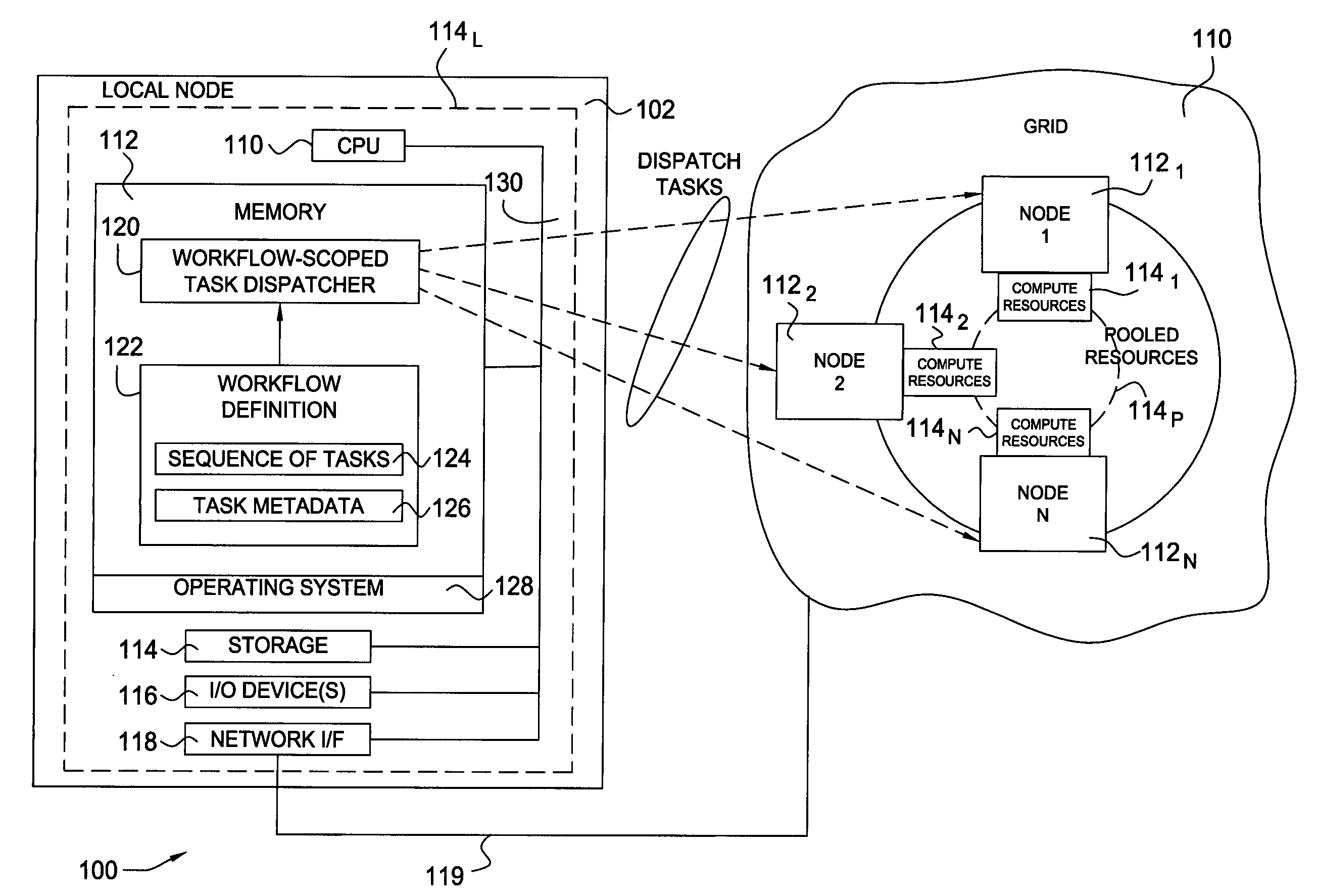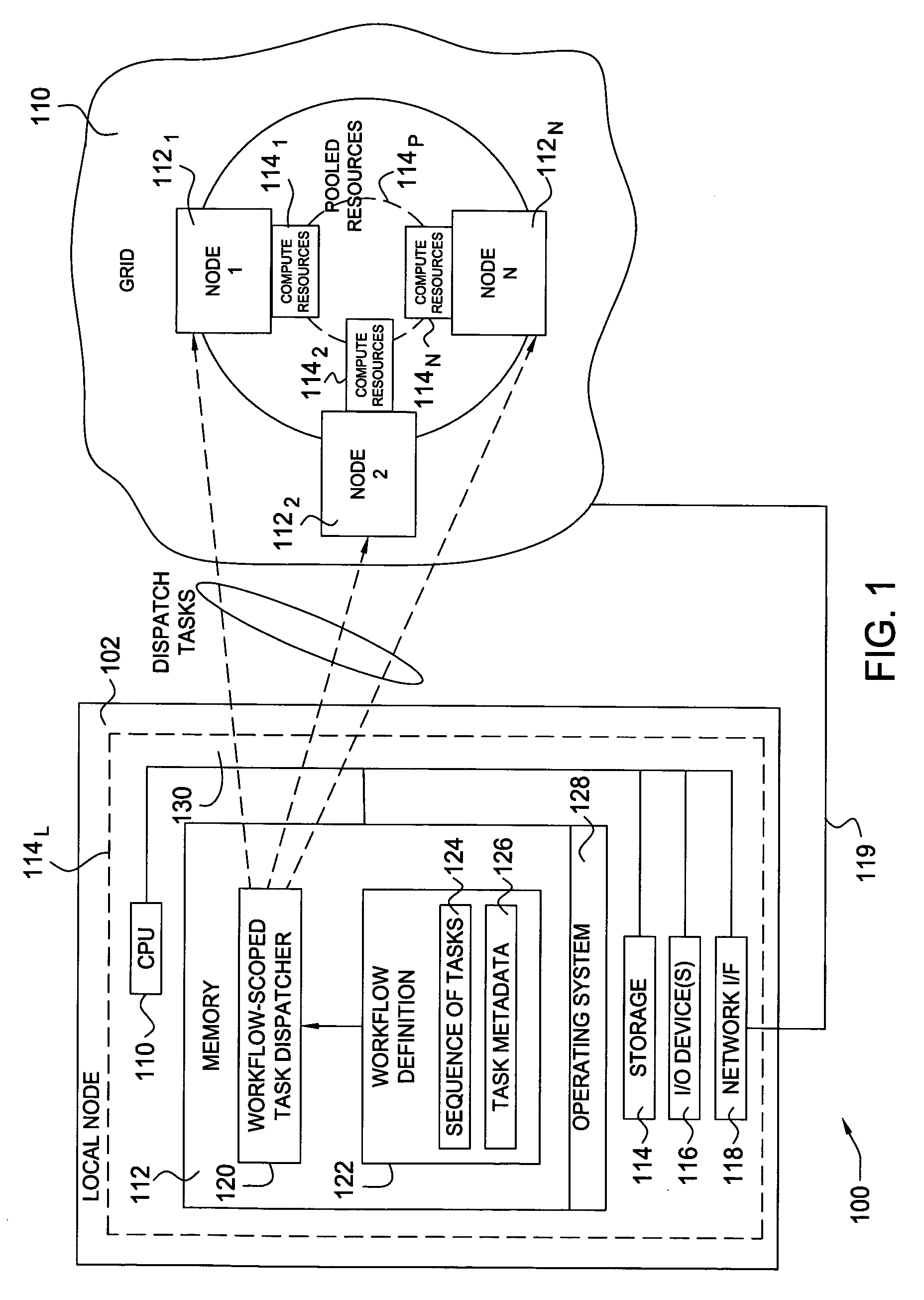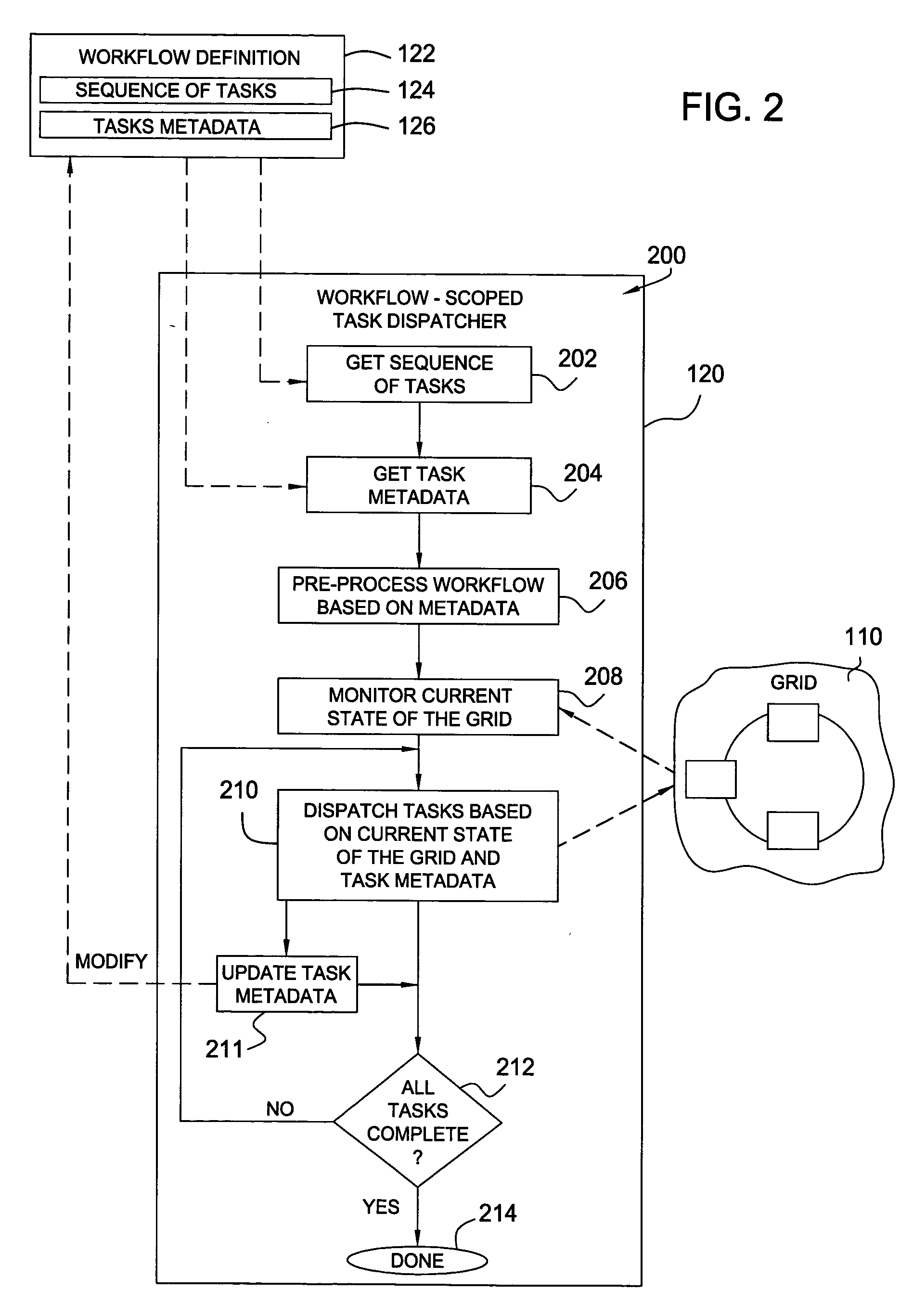Optimizing workflow execution against a heterogeneous grid computing topology
a grid computing and topology technology, applied in the field of workflow processing, can solve problems such as failure to take into account the sub-optimal workflow processing
- Summary
- Abstract
- Description
- Claims
- Application Information
AI Technical Summary
Benefits of technology
Problems solved by technology
Method used
Image
Examples
Embodiment Construction
[0020] Embodiments of the present invention provide methods and apparatus to optimize workflow execution by the intelligent dispatching of workflow tasks against a grid computing system or infrastructure (hereinafter, simply a “grid”). In effect, a grid task dispatcher may be configured to dispatch tasks in a manner that takes into account information about an entire workflow, rather than just an individual task. Unlike conventional task-scoped task dispatchers, such a workflow-scoped task dispatcher may receive as input, an entire workflow to be executed against the underlying grid, rather than a single task. Utilizing information about the tasks (task metadata), the workflow-scoped task dispatcher may more optimally assign work to compute resources available on the grid, leading to a decrease in workflow execution time and more efficient use of grid computing resources.
[0021] As used herein, the term grid computing system generally refers to a connected group of pooled computing ...
PUM
 Login to View More
Login to View More Abstract
Description
Claims
Application Information
 Login to View More
Login to View More - R&D
- Intellectual Property
- Life Sciences
- Materials
- Tech Scout
- Unparalleled Data Quality
- Higher Quality Content
- 60% Fewer Hallucinations
Browse by: Latest US Patents, China's latest patents, Technical Efficacy Thesaurus, Application Domain, Technology Topic, Popular Technical Reports.
© 2025 PatSnap. All rights reserved.Legal|Privacy policy|Modern Slavery Act Transparency Statement|Sitemap|About US| Contact US: help@patsnap.com



